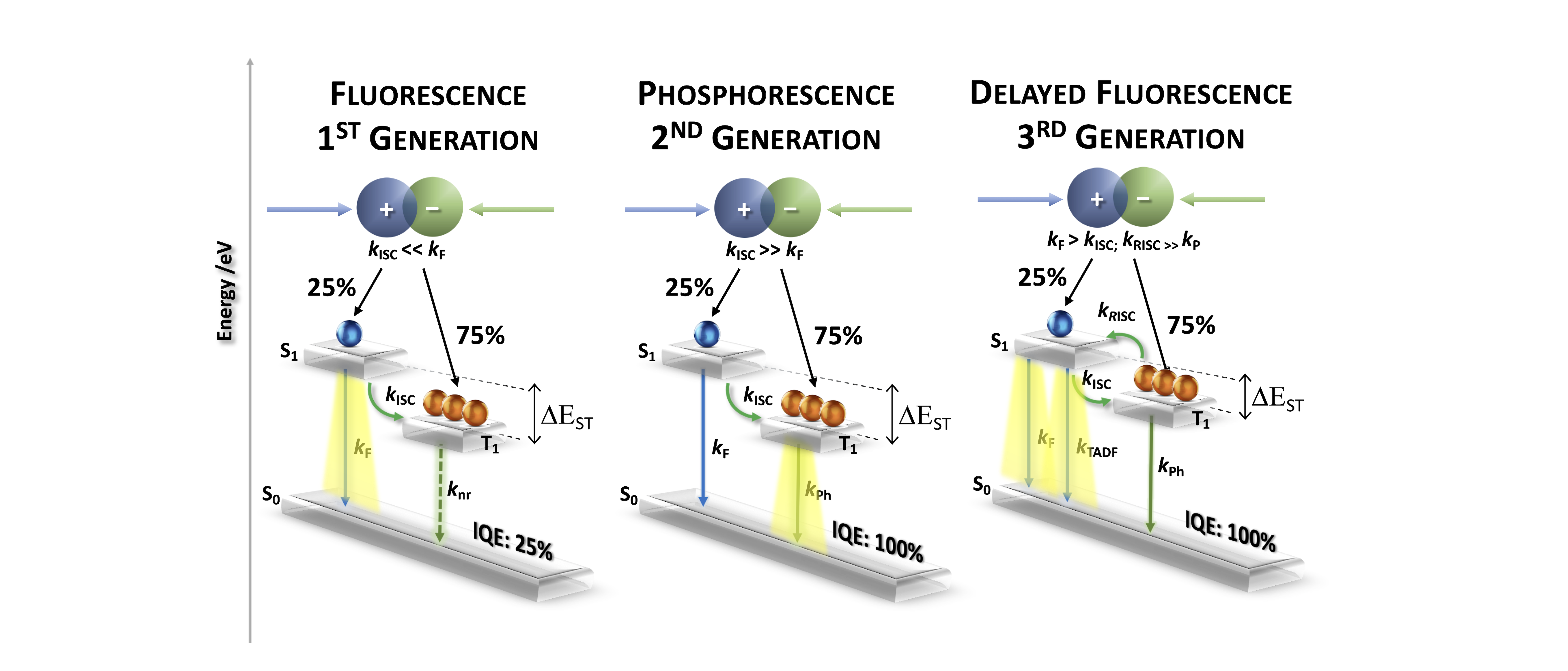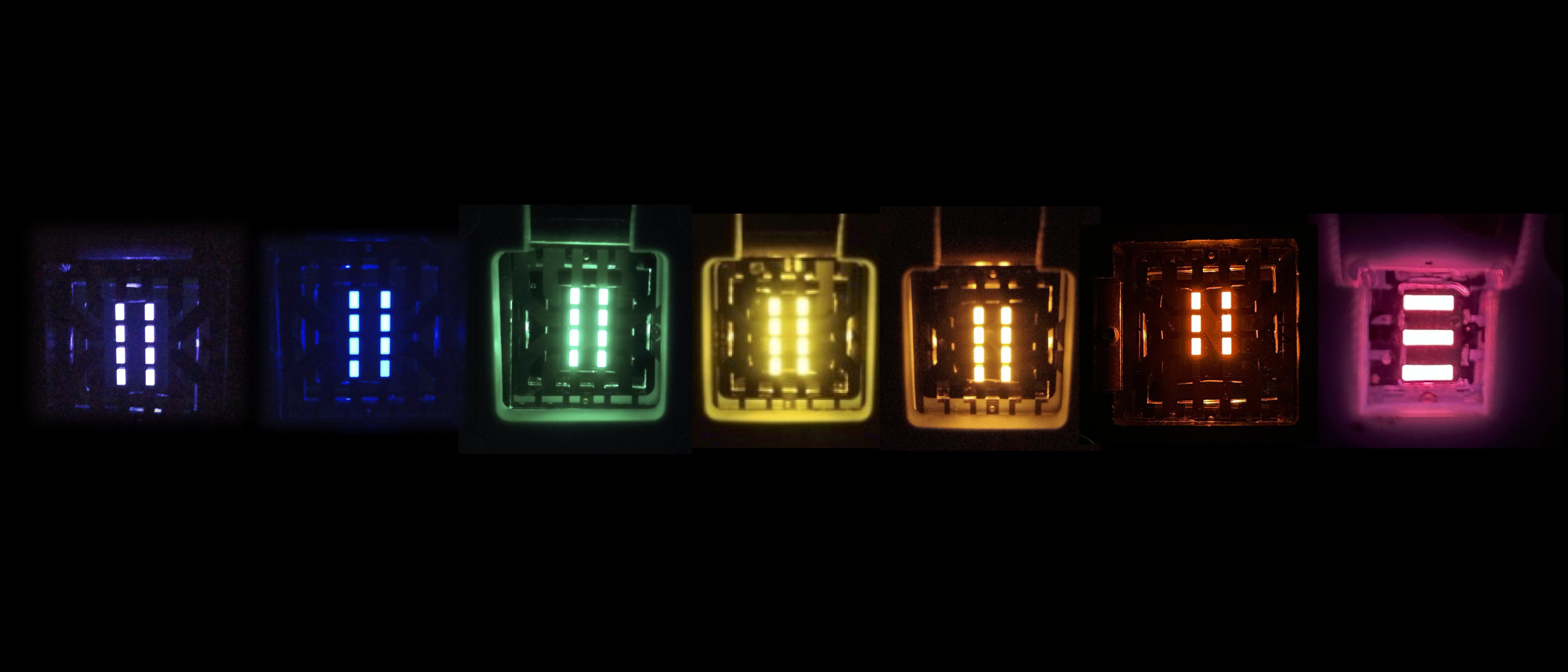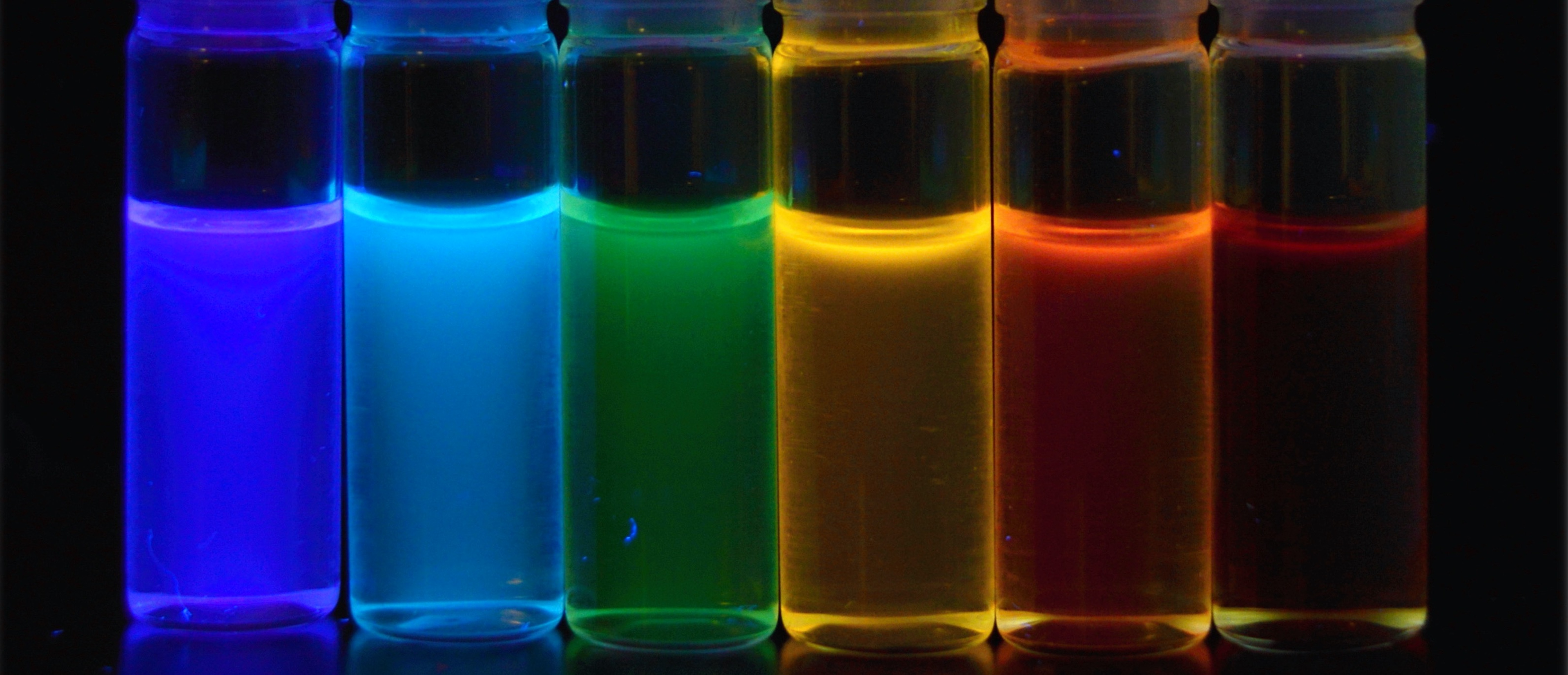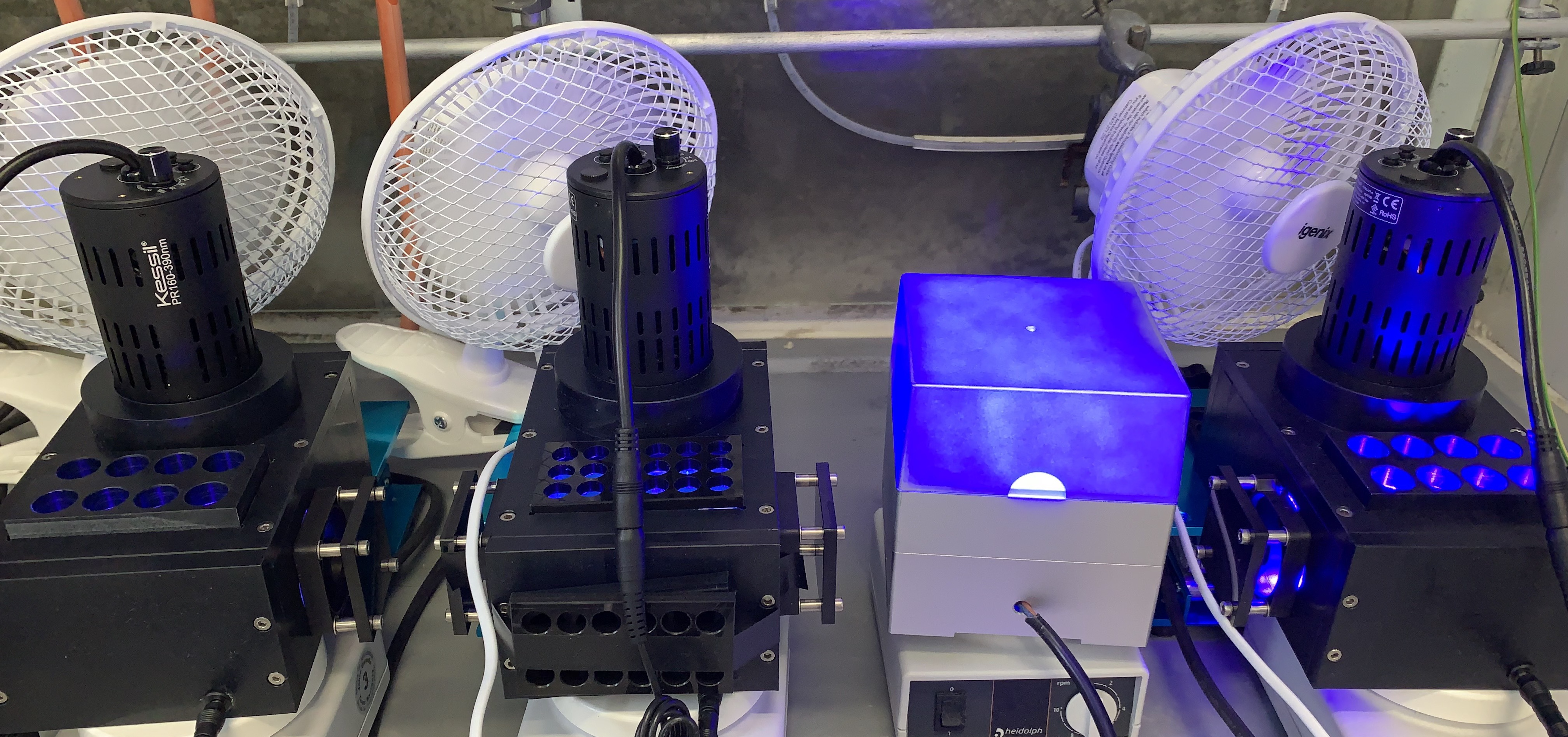Members of the Zysman-Colman group conduct multidisciplinary research to develop optoelectronic materials. We use a combination of organic synthesis, organometallic and coordination chemistry, varied analytical techniques such as NMR, mass spectrometry, absorption and emission spectroscopy, and cylic voltammetry, coupled with molecular modeling to address three major research objectives:
- Development of luminophores for energy-efficient visual displays and flat panel lighting based on organic light emitting diode (OLED) and light-emitting electrochemical cell (LEEC) device architectures;
- Development of sensing materials employed in electrochemiluminescence;
- Photocatalyst development and mechanistic understanding of photocatalytic reactions.
Research Overview: Movie regarding our work on deep blue iridium complexes
 Luminophores
Luminophores
The invention of artificial lighting, dating from Thomas Edison's invention of the incandescent light bulb in 1879, is arguably one of the most important inventions of humankind. Artificial lighting permits most human activities to continue past sundown, thus immeasurably increasing worldwide human productivity. Though Edison's device was much brighter than candle lighting, it was inefficient, converting only 0.2% of electricity into light. Since this seminal invention, many other lighting devices has been developed, from the tungsten lamp, to fluorescent tubes to halogen lighting to light-emitting diodes (LEDs) to organic light-emitting diodes (OLEDs). With each further iteration in lighting technology, the quality (pureness of colour), power efficiency and brightness of the light produced by the device have each improved.
Artificial lighting represents a $15 Billion market in the United States alone and almost $91 Billion worldwide, corresponding to 20% of total worldwide energy output. The environmental impact related to this energy consumption is enormous and is estimated to be responsible for 7% of global CO2 emissions.
OLED displays are a disruptive technology. Their performance is superior to other technologies such as LCDs. Consequently, OLED displays are rapidly gaining increasing market share across mobile phones, smartwatches, some large area TVs and increasingly in automotive displays and lighting.
Our group is actively involved in luminophore design. We have developed fluorescent, phosphorescent, triplet-triplet annihilation, hot exciton, and thermally activated delayed fluorescence (TADF) materials, with the goal of addressing the current challenges in solid-state lighting and visual displays.


 Materials for Electrochemiluminescence
Materials for Electrochemiluminescence

Our research in this area is directed to expanding the pantheon of available emitters and colours for electrochemiluminescence. We have developed new ECLphores based iridium(III) and copper(I) complexes as well as organic TADF compounds.
 Photocatalysis
Photocatalysis

Our group focuses on the development of sustainable photocatalysts based either on Earth-abundant metal complexes or organic TADF compounds.



















